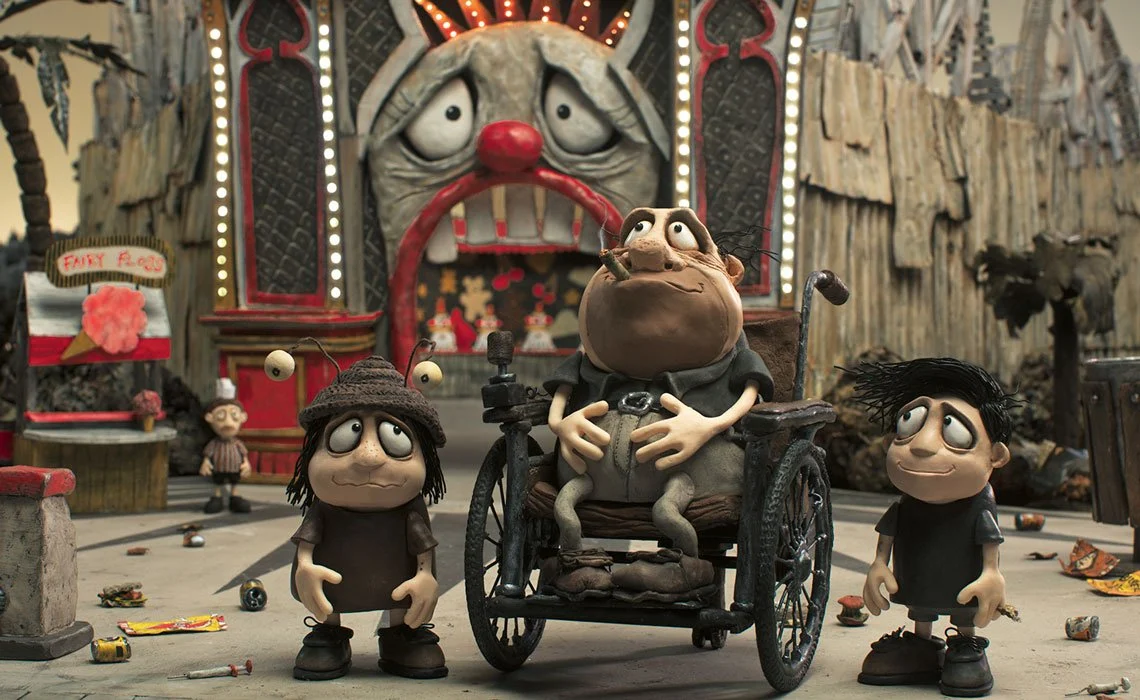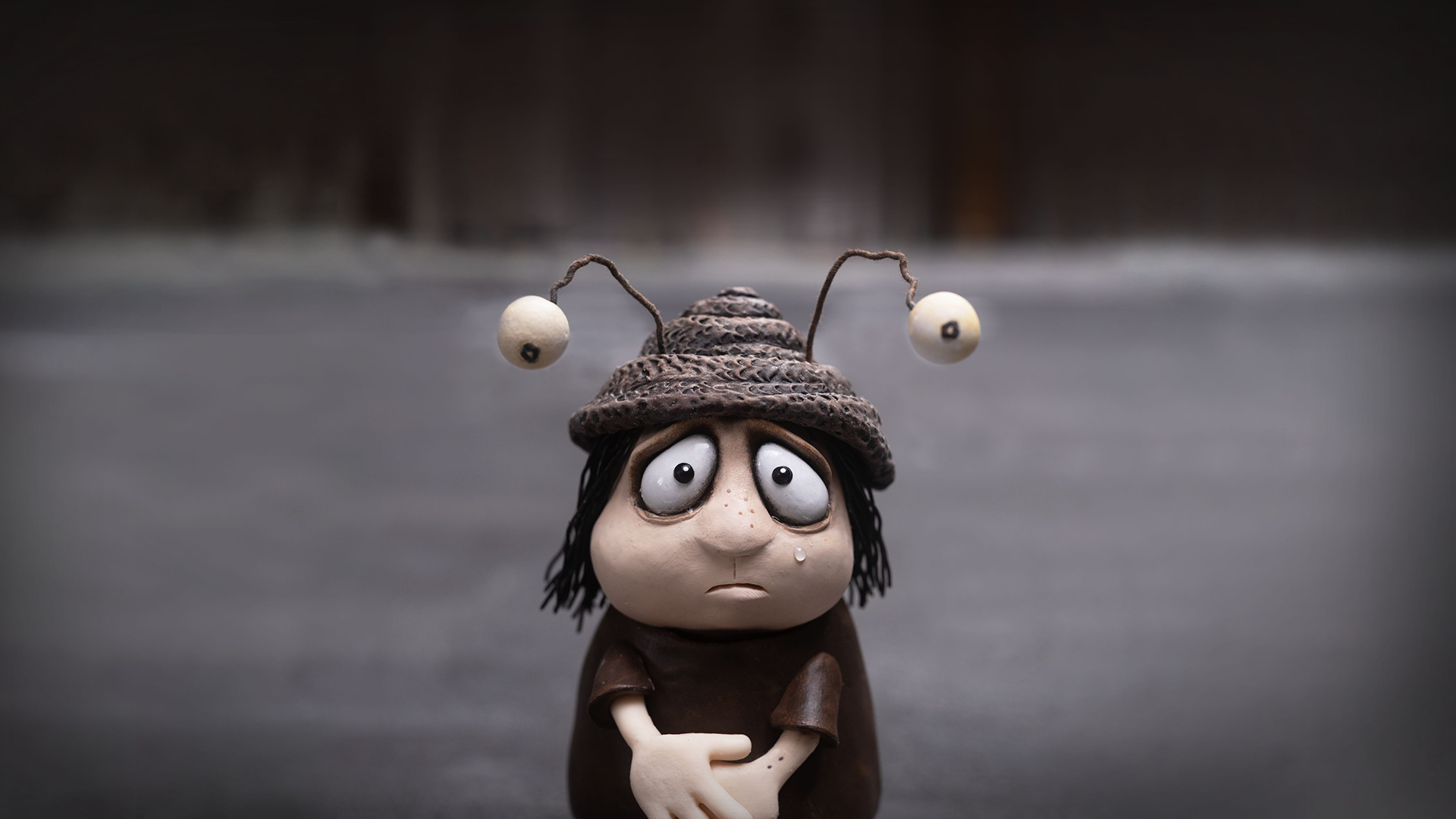Arguments are often made by the true auteur artists working today that animation does not constitute a genre in itself, but simply a medium in which to tell stories. Western animation too often spreads the idea that animation is best used to help younger audiences reckon with more existentialist ideas that may have been harder to contemplate in live-action. If there’s any crux to that argument that’s true, it is that animation does often offer a space for healing, but that doesn’t mean it’s exclusively for children. In fact, the lack of traditional parameters regarding what can be accomplished visually allows animation to reach a potentially much wider audience by discussing a plethora of issues relating to different stages of life.
Adam Elliot’s latest stop-motion animated feature, “Memoir of a Snail,” achieves this ambition, and in no small part because it was loosely inspired by his own life. Beginning in the 1970s, “Memoir of a Snail” centers on two young twins, Grace and Gilbert, who grow up in fear of their alcoholic father, Percy. Their relationship is deeper than the ties that bind most siblings. It is Gilbert who is tasked with protecting Grace from cruel schoolyard bullies, as their father can barely be bothered to take any sort of interest in whatever his children are doing at any given moment. However, surprising circumstances place Grace and Gilbert in separate foster homes, leaving them to advance through adolescence with the feeling that their better halves will be gone forever.

Comparisons may be made to Elliot’s last animated feature, “Mary and Max,” which also focused on a deep interpersonal relationship, even if it wasn’t a familial one. The difference is that “Memoir of a Snail” does not make the poetic choice of following both characters simultaneously. Grace becomes the de facto protagonist of the film upon their separation, as the story follows her increasingly futile attempts to get out of her own shell (hence the snail metaphor).
The connection between Grace and Gilbert is so palpable within the early segments that the thought of their separation becomes all the more jarring. Grace, like the audience, must constantly reflect on the fact that she no longer has a reliable friend to express her innermost desires and anxieties. Although not every audience member will relate to the specific trauma of losing a sibling, Grace’s assessment of her dwindling mental health state offers a far more universal theme.
Elliot is also able to play around with the concept of subjective memory, as much of the film is expressed through voiceovers by Grace in the future, who is caring for an old woman named Pinky. The key decision that Elliot makes is that Grace has given up being an active protagonist by the point that she begins looking back at her life’s story. It’s evident that she is not satisfied with the position that she is currently in, as she has learned from experience that there’s little reason to invest in fantasies that don’t play out. This gives a fascinating framing device for Elliot to use. While ostensibly, much of “Memoir of a Snail” is a coming-of-age story, there’s a deep sense of foreboding that suggests that any occasional moments of happiness that Grace experiences will ultimately be trivial.
There’s a risk that “Memoir of a Snail” might be too honest for its own good. Grace suffers no shortage of embarrassments and tragedies throughout her life. Between a sheltered religious upbringing, a manipulative romantic partner, and multiple mental health crises, the extent to which Grace is almost constantly in a state of misery could have easily become quite melodramatic had Elliot not added such a bleak sense of humor. Nothing that happens to Grace strains the realm of credibility, and Elliot suggests that she is an inherently pessimistic person who is just choosing to spotlight the worst moments in her life. The ultimate character arc that Grace experiences isn’t necessarily one of growing up, but of coming to realize that the things that actually made her happy were there all along.
The vocal cast of “Memoir of a Snail” certainly lends it emotional authenticity, which is a quality that is needed when the style of animation itself is so purposefully obtuse. In the role of Grace is a remarkable role for “Succession” star Sarah Snook, who manages to capture both the idealistic enthusiasm of an excitable adolescent and the embittered loneliness of an aging loner. Elliot again risks undoing the brilliance of his own conceit by having a consistent vocal performance undercut by flashbacks using the same performer, but Snook is able to differentiate her mannerisms to make it very clear which aspect of Grace the viewer is intended to be hearing from at any given moment.

Additional vocal performers add a sense of theatricality to the film when it risks being far too morose. The occasional appearances by these larger-than-life characters don’t just curb any detours into unwatchable misery but give insight into how Grace perceives the world. It is very clear that the story being presented is her interpretation of events. Although Eric Bana’s role as a stern magistrate and Tony Armstrong’s appearance as Grace’s devious husband add a spark of personality to their respective segments, it’s the soulful innocence Kodi Smit-McPhee brings to a young Gilbert that makes the sibling dynamic so effective.
To say the animation itself is gorgeous would be an understatement, as Elliot once again crafts a unique “slice of life” story in which none of the edges of reality are sanded down. Much of the flashforward sequences take place in the garden where Pinky and Grace stay, and that aesthetic extends to the rest of the film. The world Grace inhabits feels like a garden, in which even the most ugly and unkempt things will eventually make way for something new. Progress is clearly the theme of “Memoir of a Snail,” even if the film acknowledges that it’s a process that is often painful. It’s often upsetting, occasionally quite funny, and even a bit existential at times, but “Memoir of a Snail” has a profundity of truth that makes it one of 2024’s must-see animated titles.




![Interceptor [2022] ‘Netflix’ Review: This ship Was Sunk Even Before it Set Sail](https://79468c92.delivery.rocketcdn.me/wp-content/uploads/2022/06/Interceptor-2022-Netflix-Original-768x384.webp)
![The Third Murder [2018]: ‘NYAFF’ Review](https://79468c92.delivery.rocketcdn.me/wp-content/uploads/2018/06/The_Third_Murder_NYAFF_HOF_1-768x512.jpeg)


